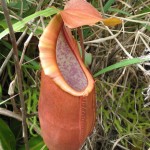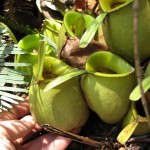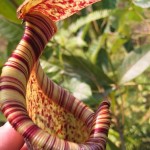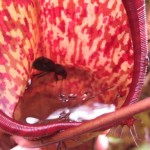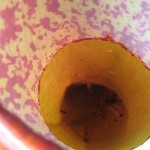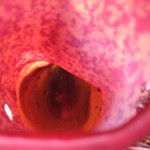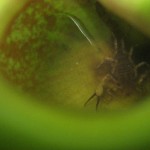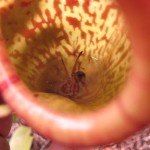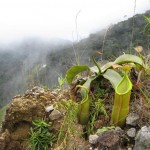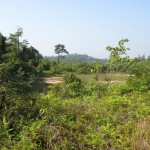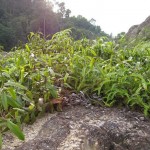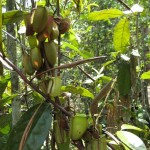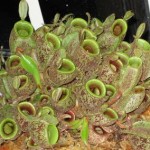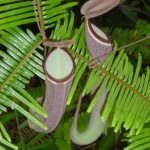What Are Nepenthes
Nepenthes are also known as Tropical Pitcher Plants, Monkey Cup or Periuk Kera in Bahasa Malaysia. They are known for their beautiful “pitchers” but it is their carnivorous nature that intrigues people.
Tropical Pitcher Plants have vines and their stems can reach 10 meter in length. Most species produce 2 types of pitchers. They are called lower pitchers and upper pitchers. Lower pitchers are produced when the plant has not started to vine and they usually rest on the ground. The pitchers are more globose and contain more pitcher fluid. The upper pitchers are more funnel shape or cone shape as the plant start to vine. If you are not familiar with pitcher plants, you might think there are two different species in a same location. But when you look closer you’ll notice that the pitchers come from the same plant.
How Do They Capture Insects
Tropical Pitcher Plants capture insects by producing traps that are formed into a shape of a jug or “pitcher”. These pitchers are an extension from its leaves. Insects are attracted to the pitchers by a combination of scent, color and nectar. The walls around the opening of the pitcher (peristome) are slippery.
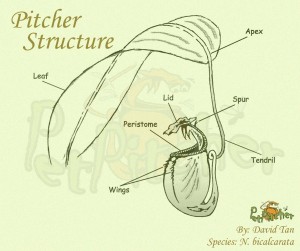 Occasionally, a greedy insect slips and falls into the pitcher when it tries to reach the lower part of the peristome where there is most nectar. Once an insect falls in, the waxy substance and tiny downward pointing hairs (they’re almost invisible to the eye) on the inside pitcher walls prevents the insect from climbing out.
Occasionally, a greedy insect slips and falls into the pitcher when it tries to reach the lower part of the peristome where there is most nectar. Once an insect falls in, the waxy substance and tiny downward pointing hairs (they’re almost invisible to the eye) on the inside pitcher walls prevents the insect from climbing out.
Sometimes, other predators visit the pitchers to get an easy meal from visiting insects, but in a twist of events, they too may become food to the pitchers if they are not careful negotiating the slipery peristome as in the case of the scorpion and spider below.
The fluid in the pitcher has a wetting agent that suffocates and drowns the insect within seconds. The slightly acidic fluid together with enzymes produced by the plant slowly breaks down the insect body within a period of a few days to a week depending on the size of the insect. This process releases nutrients back into the pitcher fluid. The pitcher, then, reabsorbs the nutrient-rich fluid to help in growth.
Where Can I Find Nepenthes
Tropical Pitcher Plants are native to the tropical forest vegetation of South East Asia with the center of distribution on the island of Borneo. Borneo has a greater diversity of Nepenthes than any other region on Earth. Not only that, it is home to the largest carnivorous plant in the world, the species, N. rajah. The word “raja” means “King” in the Malay language, which is an appropriate name for the largest carnivorous plant in the world. Its traps can reach the size of a football.
Tropical Pitcher Plants can be found in a variety of habitats such as peat swamp forest, heath forest, stunted vegetation in the highlands and open secondary vegetation habitats, including lime
stone hills. Most species can be found in sunny and wet areas where the soil is very low in nutrient level.
Find out more
For more information about Nepenthes, check out the disccussion in the Nepenthes board here.


